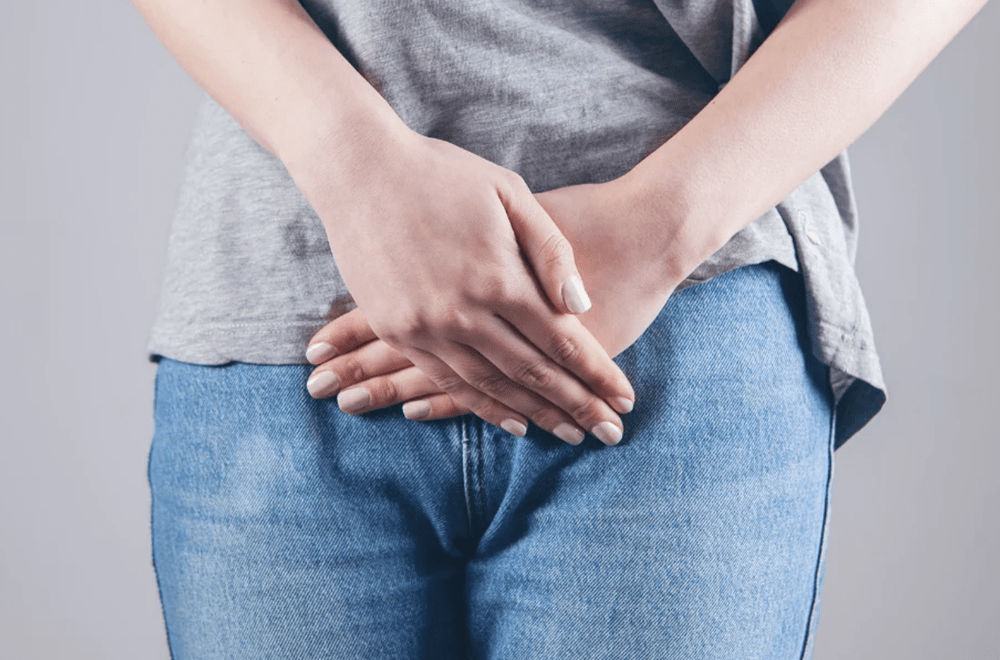Identifying the Signs of Fibroids Breaking Down:
The symptoms of shrinking fibroids vary and can present as:
Sharp or Stabbing Pain: Breakdown of fibroids can cause intense, stabbing pain in the pelvic region. This pain may be localized or radiate to the lower back.
Increased Menstrual Cramps: Women with fibroids may experience heightened menstrual cramps during the breakdown phase.
Heavy Menstrual Bleeding: Fibroid breakdown can lead to increased bleeding during menstruation. Women may notice heavier periods or prolonged bleeding.
Irregular Menstrual Cycles: Breakdown can disrupt the normal hormonal balance, causing irregular menstrual cycles.
Enlargement of the Abdomen: In some cases, degeneration can cause the fibroid to swell, leading to an enlargement of the lower abdomen. This can be palpable during self-examination.
Frequent Urination: Fibroids can exert pressure on the bladder, causing an increased urge to urinate.
Difficulty Emptying the Bladder: Large fibroids may obstruct the normal flow of urine, leading to difficulties in emptying the bladder completely.
Lower Back Pain: Another symptom is lower back pain due to the pressure exerted on surrounding tissues and organs.
Low-Grade Fever: In some cases, fibroid breakdown can be associated with a low-grade fever. This may indicate an inflammatory response.
Do fibroids cause cramps?
The size and location of fibroids can vary, and not all of them cause symptoms. However, when fibroids are large or positioned in certain areas of the uterus, they may lead to symptoms such as pelvic pain or cramping. The cramps associated with fibroids are often menstrual-like cramps and may be more noticeable during the menstrual period. The exact cause of the pain is not fully understood. It may be related to the pressure exerted by the fibroids on surrounding tissues or the release of certain substances that trigger pain and inflammation.
This explains why most of the fibroids go unnoticed and present with complications like infertility, anemia due to heavy menstrual bleeding and bursting fibroids.
Treating the degenerative (breaking down) fibroids:
The symptoms of degenerating fibroids can be excruciating and significantly disturb daily life activities. Treatment is directed towards minimizing the symptoms and removing the cause. Based on the severity and the individual circumstances here are some approaches that healthcare professionals may consider
Pain Management:
Over-the-counter pain relievers like ibuprofen or paracetamol are helpful in managing pain. Prescription pain medications are usedfor more severe pain.
Many people in our part of the world often avoid the medicine and seek options on how to relieve fibroid pain with alternate remedies. Here are some general tips that can help with the fibroids pain
Heat Therapy: Applying a heating pad or hot water bottle to the lower abdomen may help relax muscles and ease pain.
Warm Baths: Soaking in a warm bath may provide relief.
Hydration: Staying well-hydrated is essential for overall health and may help with discomfort. Drinking plenty of water throughout the day is beneficial.
Regular Exercise: Engaging in regular, moderate exercise can help improve circulation and reduce pain. However, it is best to consult with a healthcare provider before starting any new exercise regimen.
Dietary Changes: Some women find relief by making dietary changes. A diet rich in fruits, vegetables, and whole grains, and limiting the intake of caffeine and processed foods can be helpful.
Stress Management: Practices such as yoga, meditation, or deep breathing exercises may help manage stress, which can contribute to pain.
Hormonal Therapy: Hormonal medications, such as birth control pills or hormonal IUDs, may be prescribed to help control bleeding and reduce pain.
Gonadotropin-Releasing Hormone (GnRH) Agonists: These medications can induce a temporary menopausal state, reducing the size of fibroids and relieving symptoms. However, this is generally a short-term solution due to potential side effects and the temporary nature of the treatment.
Uterine Artery Embolization (UAE): This is a non-surgical procedure where the blood supply to the fibroids is cut off, causing them to shrink. It can be effective in relieving symptoms.
Myomectomy: Myomectomy is a surgical procedure to remove fibroids while preserving the uterus. It may be considered if fertility preservation is a concern.
Hysterectomy: In severe cases or when fertility is not a concern, a hysterectomy (removal of the uterus) may be recommended.
It is always necessary to consult a doctor before attempting to self-diagnose a condition. While the symptoms of degenerative fibroids may seem straightforward when reading about them, making a definitive clinical diagnosis can be challenging.
Dr Imtiaz Ahmed, an expert Endovascular surgeon and an interventional radiologist specializes in the treatment of fibroids and their complications. He works on the principles of minimally invasive surgery and always prefers to save the uterus. If you’re experiencing symptoms of fibroids consult him now for the early diagnosis and treatment to avoid complications.
Email us your queries at info@drimtiazahmad.com. Follow us on Instagram @Profdr_imtiaz_ahmad for daily updates.
For further information,please feel free to email us at info@drimtiazahmad.com. Follow us on Instagram @Profdr_imtiaz_ahmad for more details and daily updates
Youtube:https://www.youtube.com/c/DrImtiazAhmad
Whatsapp:03302963300,03312597322

